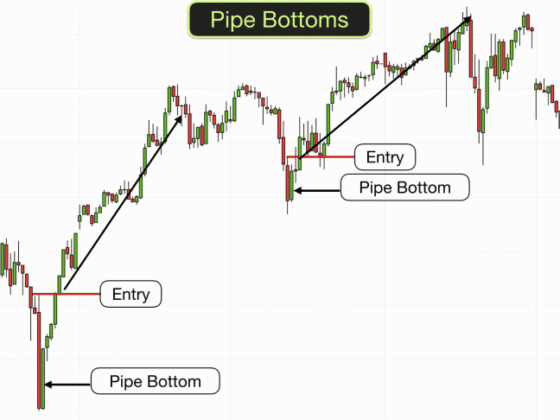By ATGL
Updated July 30, 2025
Navigating the intricate world of trading taxes can feel like walking a tightrope, but understanding key regulations can help ensure a smooth crossing. Among these, the wash sale rule plays a pivotal role in preventing traders from claiming a tax deduction on a loss if they repurchase the same or substantially identical security within a short window. This is especially important for those dealing with day trading taxes, where high-frequency transactions can easily trigger unintended violations. This rule not only affects taxation but also influences trading decisions, underscoring its significance.
This article will demystify the wash sale rule by explaining its definition and implications for traders. You’ll learn how to identify securities that could trigger the rule, explore common scenarios where traders might inadvertently violate it, and discover strategies to maintain market exposure while staying compliant.
We’ll also offer essential advice for handling wash sales during tax reporting and share practical tips for year-end planning. With these insights, you’ll be better equipped to optimize your trading taxes while remaining efficient and compliant.
What Is the Wash Sale Rule?
The wash sale rule is designed to prevent investors from artificially reducing their taxable income through strategic sales and quick repurchases. Specifically, it disallows a tax deduction on a security sold at a loss if the same or substantially identical security is repurchased within 30 days before or after the sale.
This rule is part of IRS Section 1091 and is intended to maintain the integrity of tax-loss harvesting strategies.
Key Points on the Wash Sale Rule
- Definition and Purpose: A loss is disallowed if you buy the same or substantially identical security within 30 days before or after selling it at a loss.
- Disallowed Loss: You cannot deduct losses from wash sales.
- Cost Basis Adjustment: The disallowed loss is added to the cost basis of the repurchased shares.
- Holding Period Continuation: The original holding period transfers to the new shares, which can affect long-term capital gains classification.
FAQ: Wash Sale Rules
- 30-Day Window: Avoid repurchasing the same or substantially identical securities within 30 days before or after a sale at a loss.
- Substantially Identical Securities: Includes common stock, mutual funds, preferred stock, and ETFs that track the same index.
- All Accounts Considered: The rule applies across all brokerage accounts—even if they are separate.
- When in Doubt: Refer to IRS Section 1091 and Publication 550, or consult a tax professional for clarity.
Understanding the wash sale rule helps you stay compliant while making informed trading decisions.
How the Wash Sale Rule Affects Traders
This rule directly impacts how traders deduct losses. If you sell a security at a loss and repurchase the same or substantially identical one within the 61-day window (30 days before or after), the IRS disallows the loss for that period. Instead, it adjusts the cost basis of the new shares by adding the disallowed loss, which will affect future gains or losses.
The rule discourages strategic short-term losses aimed at reducing taxes and highlights the importance of compliant trading practices.
Tips to Identify Substantially Identical Securities
Identifying whether a replacement security is “substantially identical” is key to avoiding wash sales. While identical common stock is an obvious example, preferred stock, different share classes, mutual funds, and ETFs tracking the same index may also qualify.
For example, two ETFs tracking the S&P 500—even from different providers—could be considered substantially identical. Traders should evaluate not just the name but also the underlying index or benchmark when considering alternative investment strategies.
Common Scenarios That Trigger the Wash Sale Rule
Several trading habits can unintentionally trigger wash sales:
- Multiple Accounts: Selling a stock in one account and repurchasing it in another can still trigger the rule.
- Family Transactions: The IRS treats purchases made by a spouse or dependent as if you made them yourself.
- Frequent Trading: Buying and selling the same security frequently increases the likelihood of wash sale violations.
FAQ: What happens if you accidentally do a wash sale?
If triggered, the loss is disallowed and added to the cost basis of the repurchased security. It’s best to consult a tax advisor to ensure proper handling.
What You Need to Know to Avoid Violating the Wash Sale Rule
Avoiding the wash sale rule requires planning. If you sell a security at a loss, avoid repurchasing the same or substantially identical asset within 30 days. This restriction applies to all accounts and can lead to unintentional violations.
By understanding how replacement securities are classified and the timing of trades, you can stay compliant and protect your tax strategy.
Keep Your Market Exposure Steady Using Different Securities
You don’t need to exit the market entirely to avoid a wash sale. Instead, consider replacing a sold security with a similar—but not substantially identical—investment. For instance, if you sell a tech stock, you might replace it with a tech-focused ETF that tracks a different index.
Other alternatives include:
- Switching from common to preferred stock
- Using ETFs from different sectors
- Choosing index funds with varied compositions
These strategies allow you to maintain exposure without violating the wash sale rule. Always consult a tax professional for personalized guidance.
Managing Wash Sales in Tax Reporting
Wash sales must be tracked and reported accurately. Your brokerage will typically reflect these on IRS Form 1099-B, but it’s still your responsibility to confirm the information is complete and correct.
Steps to Track Wash Sales:
- Monitor Trades: Regularly review all trading activity.
- Identify Wash Sales: Look for sales with matching repurchases in the 30-day window.
- Record Disallowed Losses: Note which losses can’t be claimed.
- Adjust Cost Basis: Add the disallowed loss to the repurchased security’s cost basis.
- Track Holding Period: Continue the original holding period on the new shares.
Using tax software or consulting with a professional can simplify this process and ensure accuracy.
Practical Tips for Year-End Tax Planning With the Wash Sale Rule
As the year ends, tax-loss harvesting becomes more active—and so does the risk of wash sales.
Tips:
- Understand the Rule: Selling and buying identical securities within 30 days disqualifies the loss.
- Plan Trades Strategically: Time your buys and sells to avoid triggering the 30-day restriction.
- Use Alternatives: Substitute with non-identical ETFs or sector-specific funds to stay invested.
- Consult Experts: Tax professionals can tailor strategies to your situation.
- Keep Accurate Records: Document your cost basis and holding periods for future reporting.
These actions can help maximize allowable losses while keeping your tax filing clean.
Take Control of Your Trading Taxes Today
Trading involves more than picking stocks—it requires understanding the tax implications of your decisions. The wash sale rule is a prime example of how one misstep can affect your ability to claim deductions and alter your cost basis and capital gains outcomes. These adjustments may also impact your overall tax rate, particularly when calculating short-term versus long-term capital gains.
To recap, this article covered:
- The definition and implications of the wash sale rule
- What counts as substantially identical
- How to manage disallowed losses and cost basis adjustments
- The effect on long-term gains and record keeping
- Tools and strategies for staying compliant
For personalized guidance and to optimize your trading tax strategy, consider joining Above the Green Line. Our members receive expert insights designed to help you trade smarter and more tax efficiently.
Related Articles













